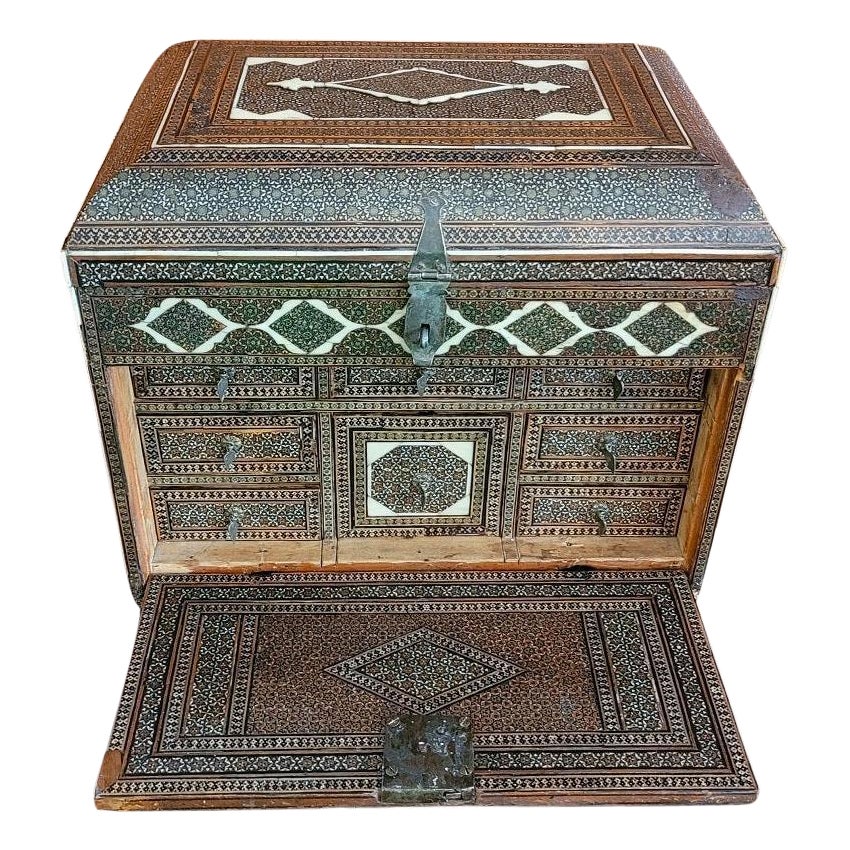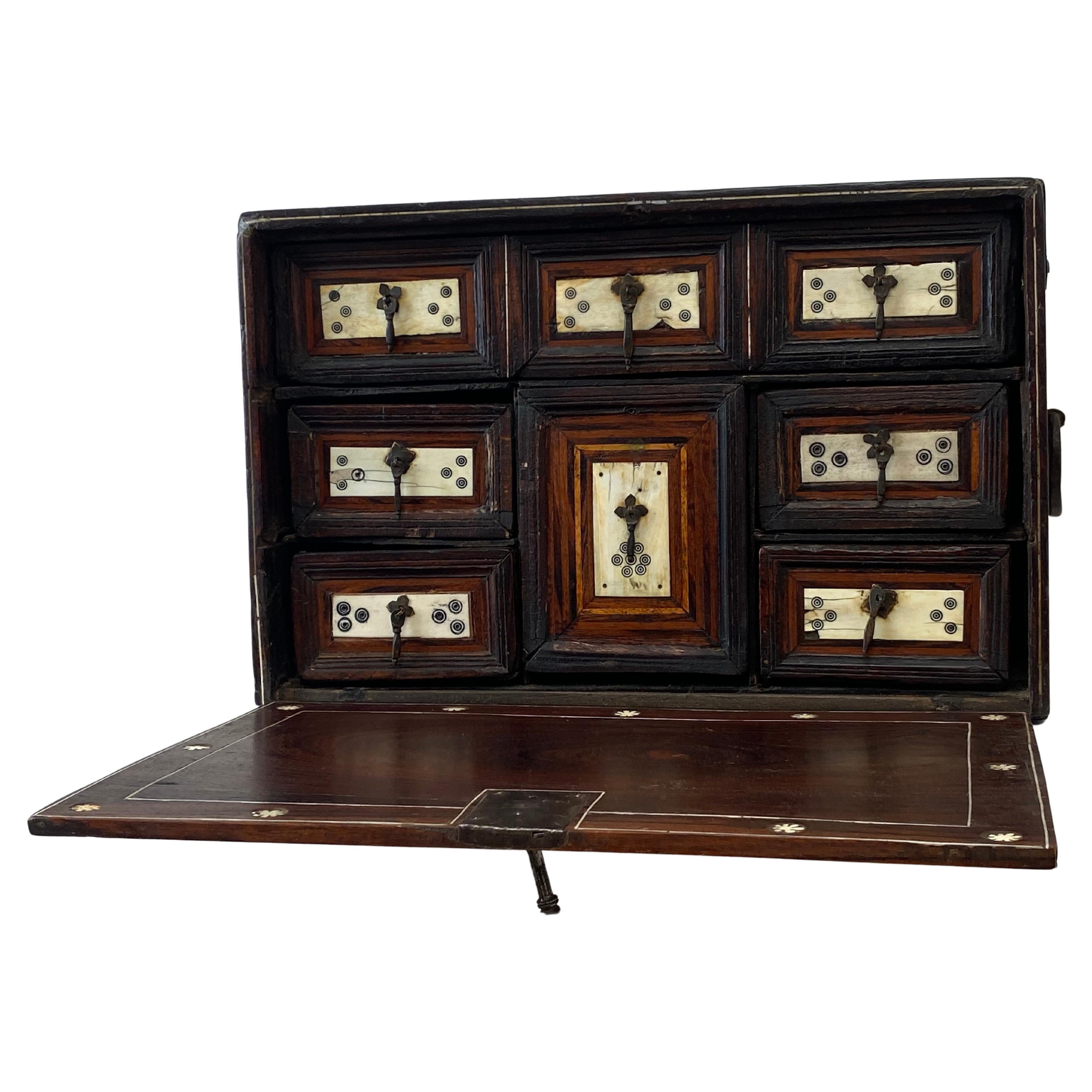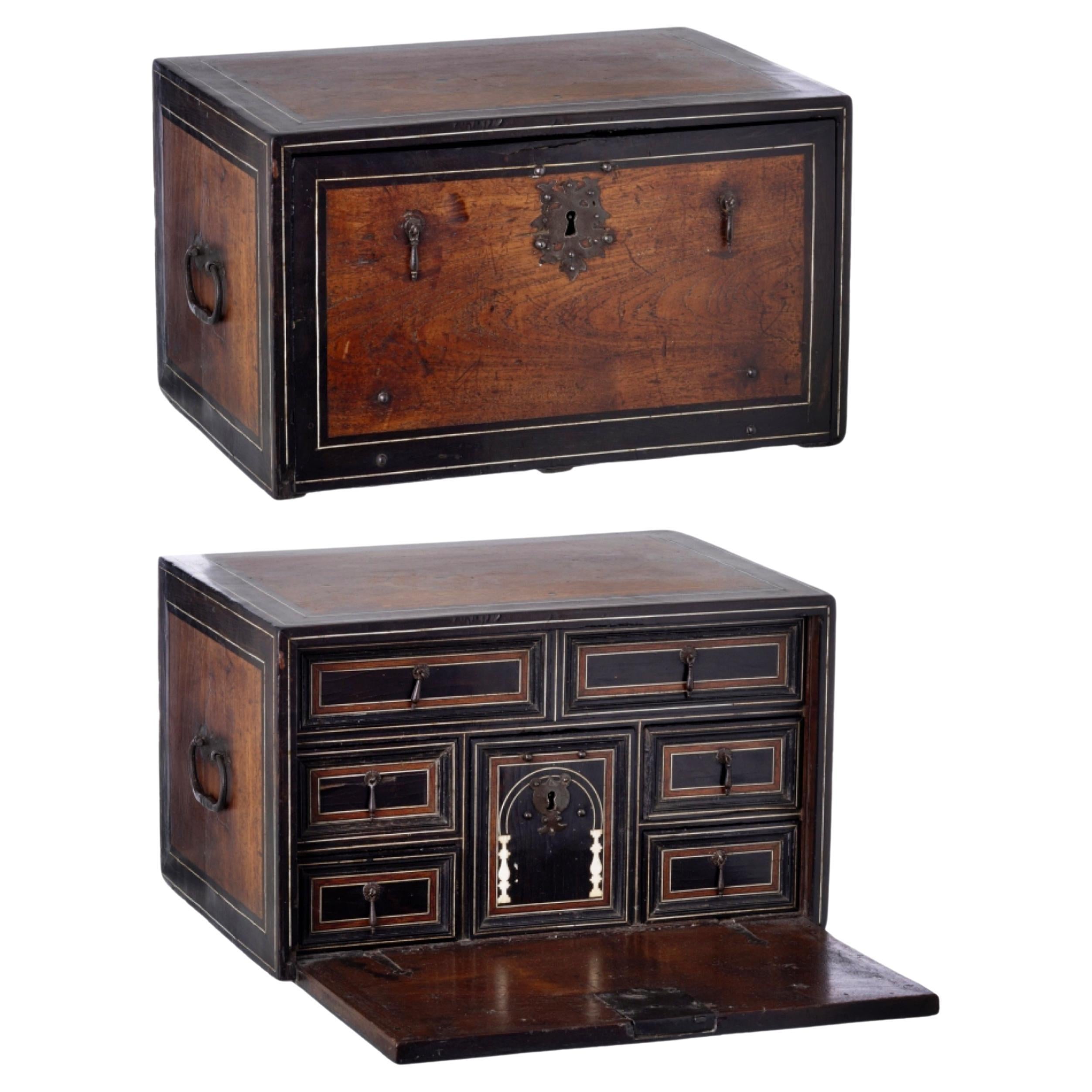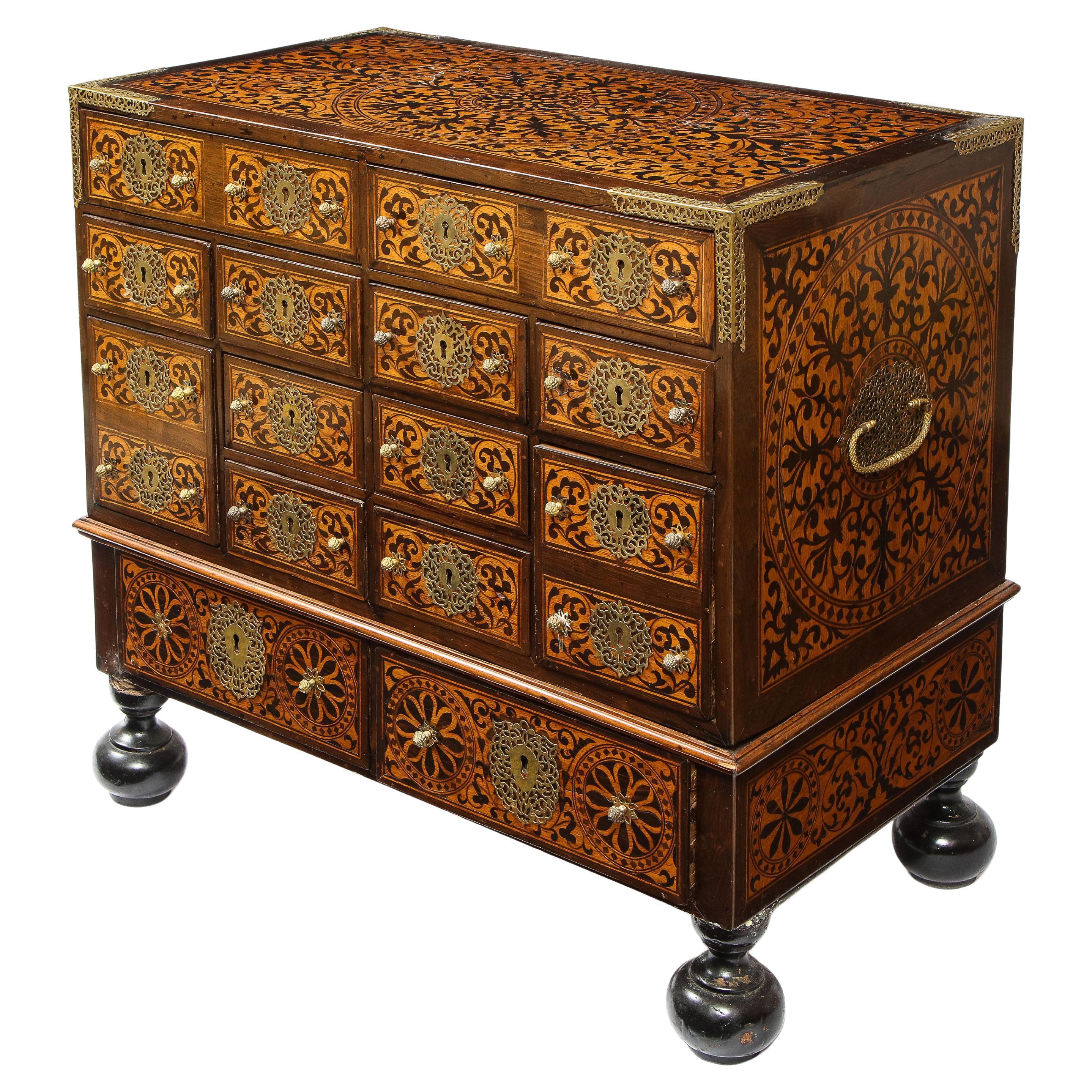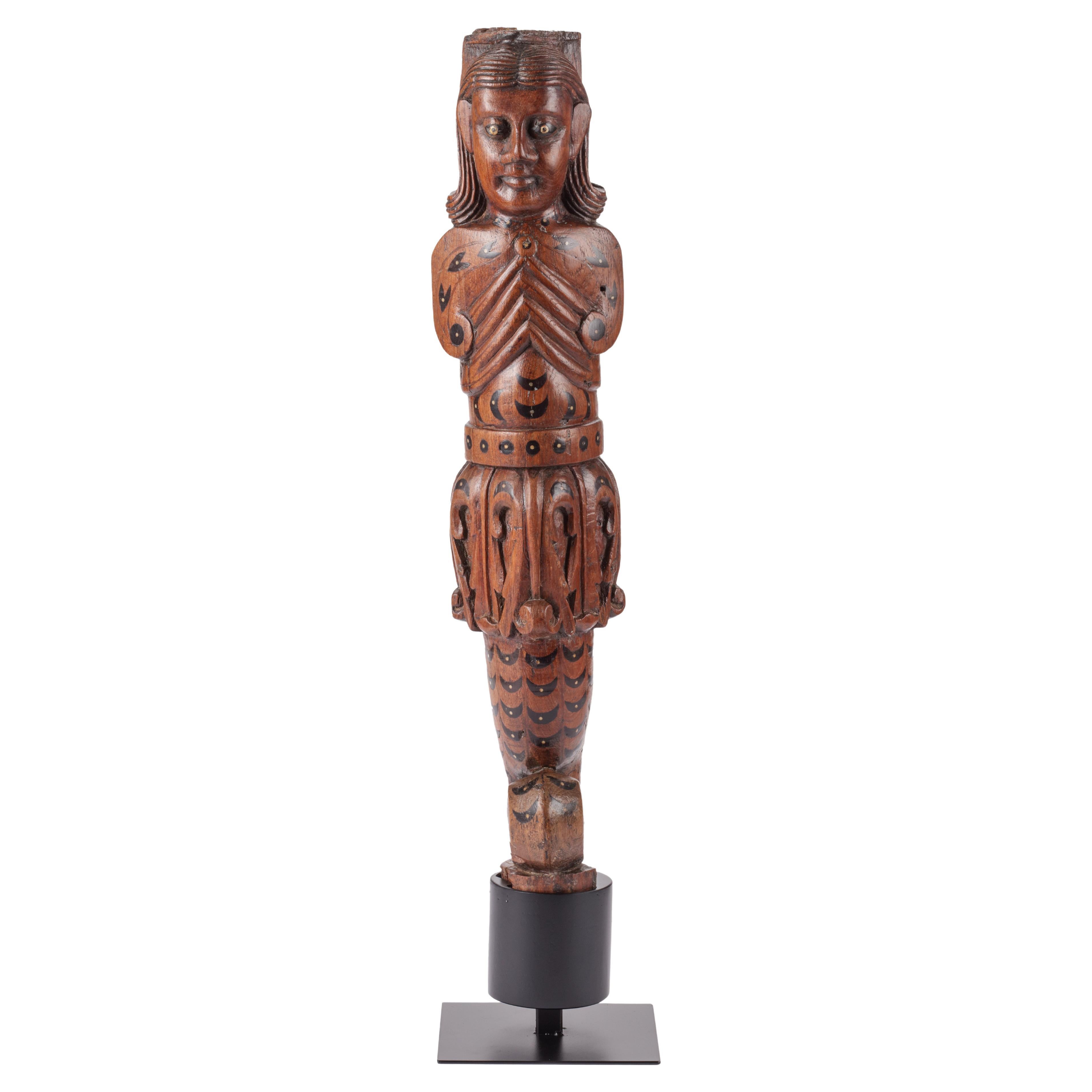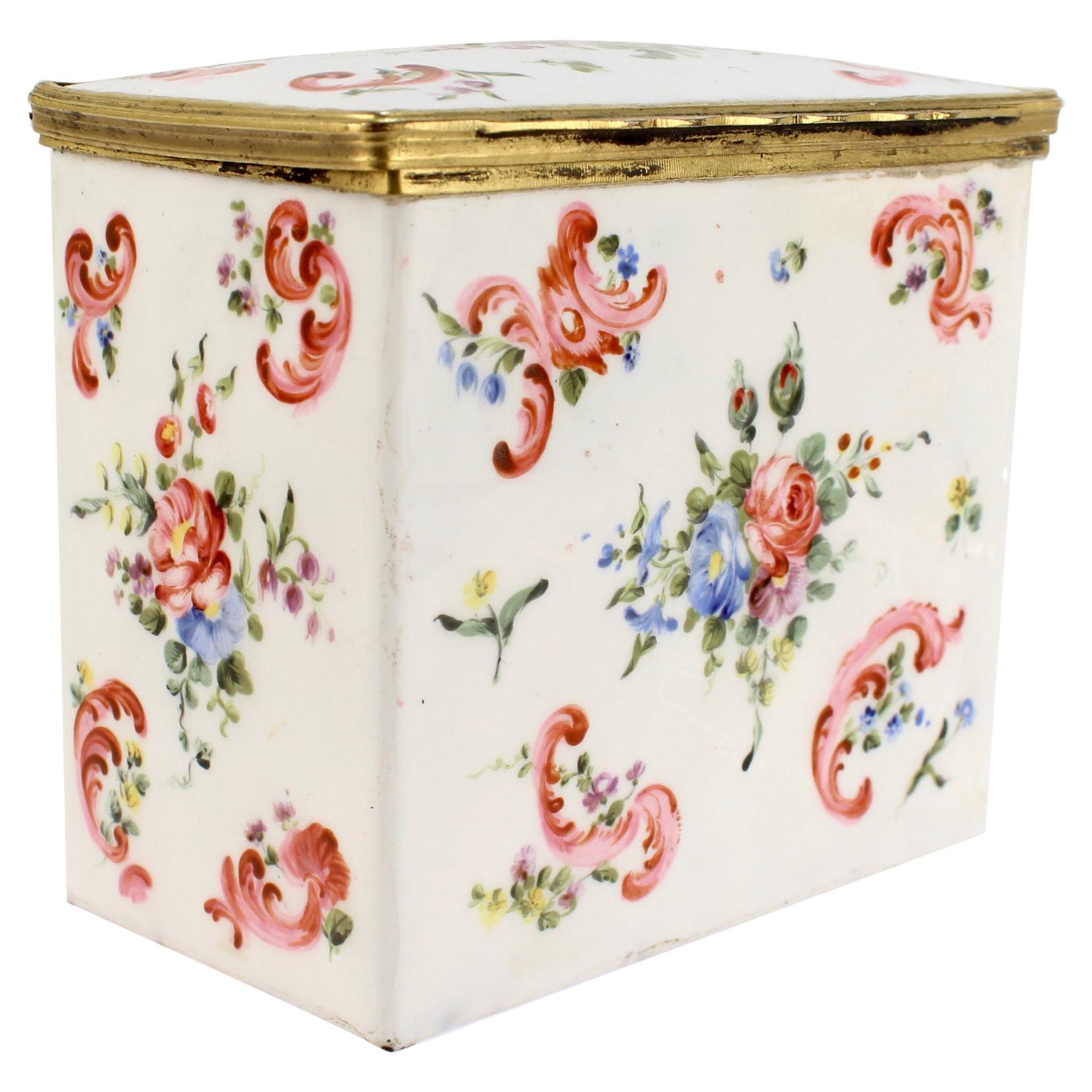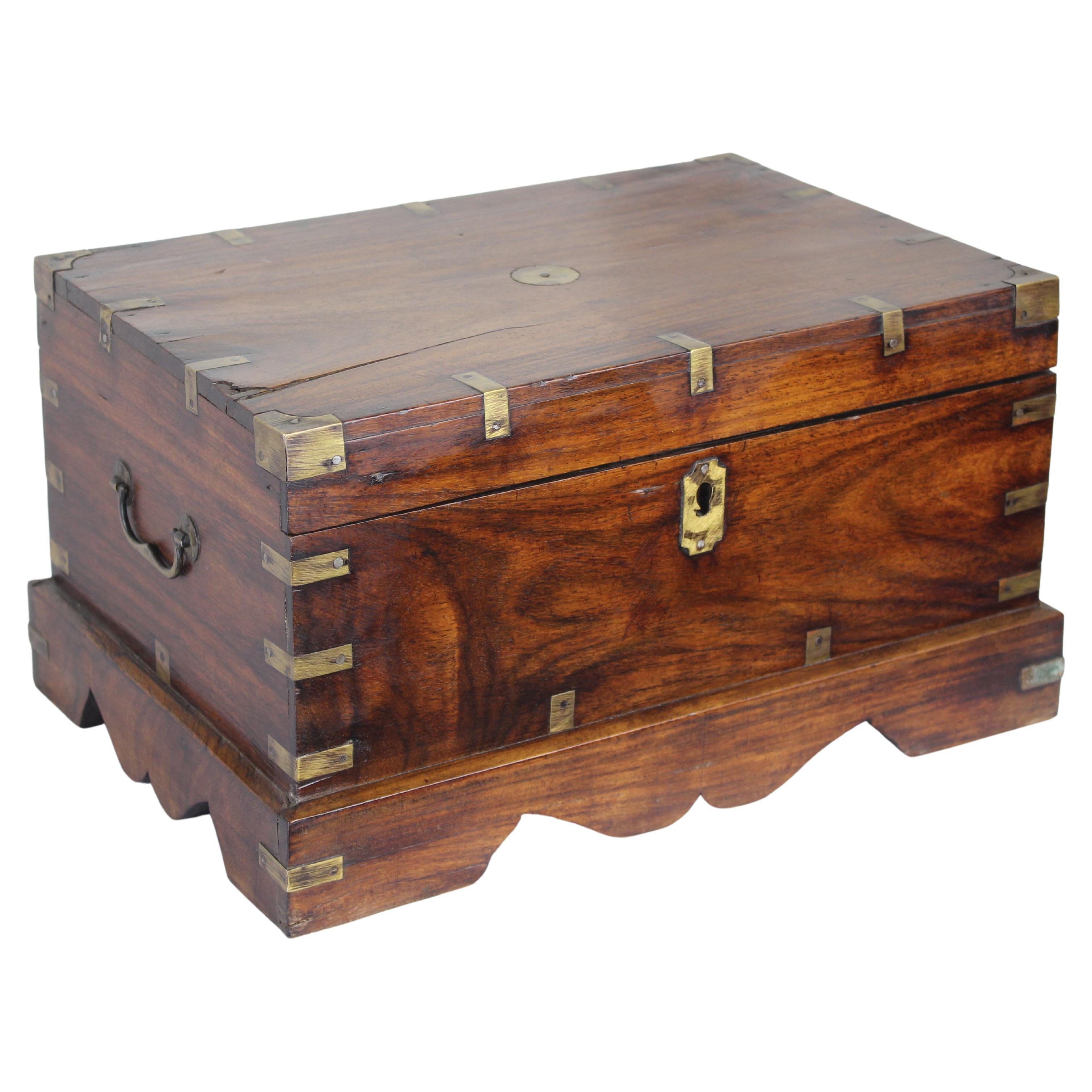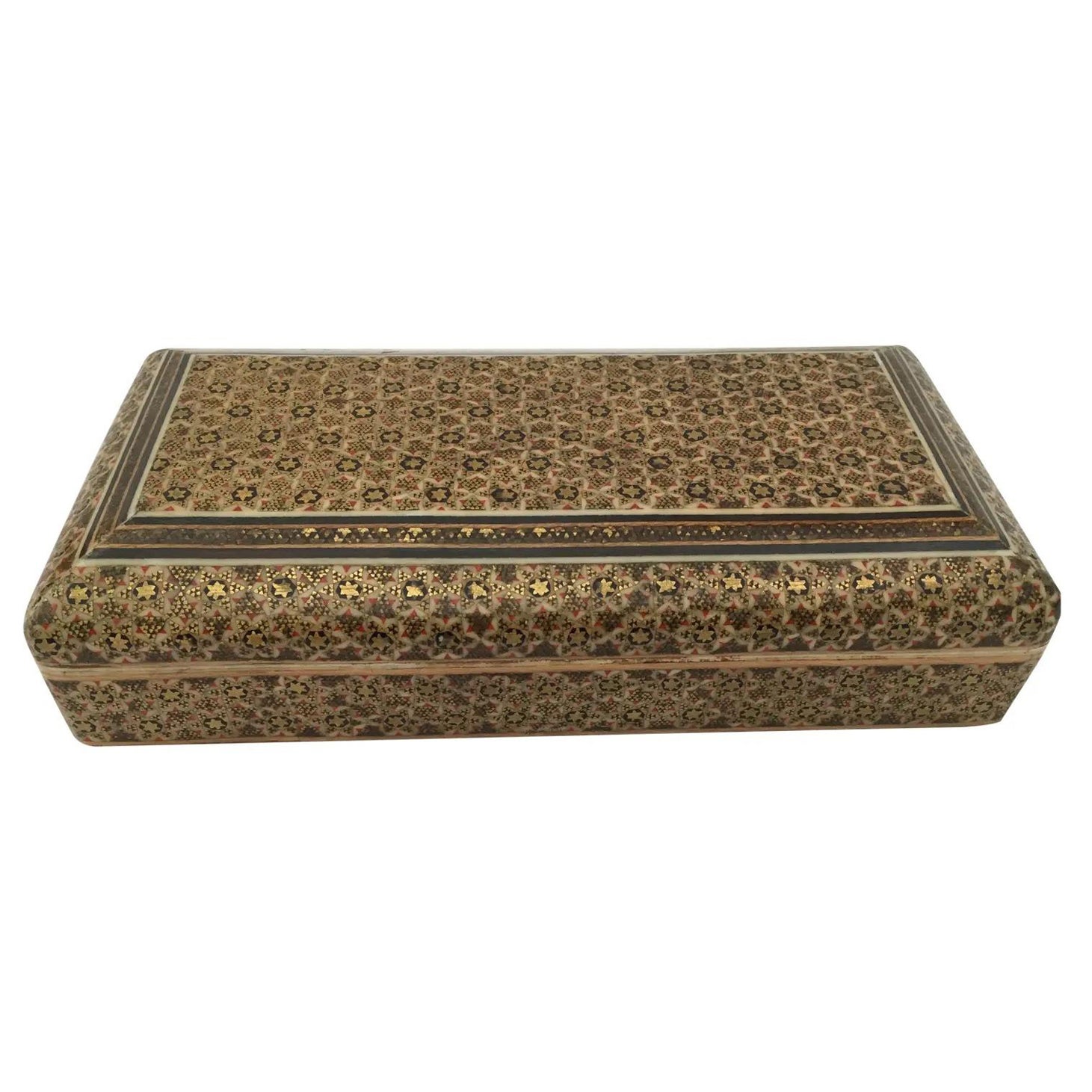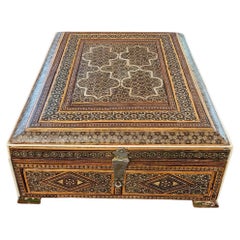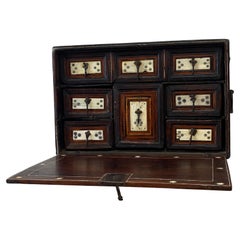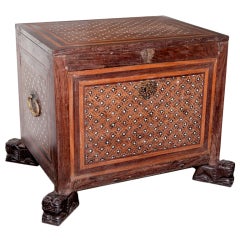
Indo-Portuguese 18C Contador
View Similar Items
1 of 7
Indo-Portuguese 18C Contador
About the Item
You May Also Like
- 18C Indo-Persian Campaign Vanity BoxLocated in Dallas, TXPRESENTING AN EXTREMELY RARE AND HIGHLY IMPORTANT Indo-Persian Campaign Vanity Box from circa 1780-1800. Box inlaid with exquisite mosaic inlay. In the Indo-Persian style of mosaic with Islamic styles. The mosaic consists of green semi precious stone, bone, brass and pewter in star shaped geometric designs. Box opens up to reveal a travel mirror...Category
Antique 18th Century Indian Anglo-Indian Decorative Boxes
MaterialsMulti-gemstone, Brass
- 18 C, Indo-Portuguese Vargueno Mini CabinetLocated in Dallas, TXPresenting a fabulously rare 18c Indo-Portuguese Vargueno mini cabinet. Extremely rare, highly important and desirable colonial piece ! It is an In...Category
Antique Late 18th Century Indian Anglo-Indian Decorative Boxes
MaterialsBrass
- Antique Indo-Portuguese Table CabinetLocated in Schellebelle, BEExceptional Indo-Portuguese table cabinet from the 17 th Century, the rare Cabinet is in a very good condition, has a hinged front and has 8 drawers, b...Category
Antique 17th Century Indian Models and Miniatures
MaterialsRosewood
- COUNTER CASH Indo-Portuguese from the 17th centuryBy Europa AntiquesLocated in Madrid, ESCOUNTER CASH Indo-Portuguese from the 17th century in ebony rosewood and ivory. Top, sides and front decorated with ivory inlay. Folding top showing factory with six drawers and ...Category
Antique 17th Century Portuguese Renaissance Decorative Boxes
MaterialsEbony
- Indo-Portuguese Brass-Mounted Hardwood and Indian Wood Marquetry CabinetLocated in New York, NYAn Indo- Portuguese brass-mounted hardwood and Indian Wood marquetry cabinet, Goa. Gorgeously made with hand-cut hardwood and the finest quality of othe...Category
Antique 1680s Indian Anglo-Indian Cabinets
MaterialsBrass
- 16th-Century Indo-Portuguese Colonial Mother-of-pearl Gujarat CasketLocated in Amsterdam, NLAn exceptional Indo-Portuguese colonial mother-of-pearl veneered casket with silver mounts India, Gujarat, 2nd half of the 16th century, the silver mounts Goa or probably Lisbon Measures: H. 16 x W. 24.6 x D. 16.1 cm An exceptional Gujarati casket with a rectangular box and truncated pyramidal lid (with slopes on each side and a flat top) made from exotic wood, probably teak (Tectona grandis), covered with a mother-of-pearl mosaic. The tesserae, cut from the shell of the green turban sea snail (Turbo marmoratus, a marine gastropod) in the shape of fish scales, are pinned to the wooden structure with silver ball-headed nails. The casket is set on bracket feet on the corners. The masterfully engraved decoration of the silver mounts follows the most refined and erudite Mannerist repertoire of rinceaux and ferroneries dating from the mid-16th century. The high quality and refinement of the silver mounts and, likewise, the silver nails that replaced the original brass pins used to hold the mother-of-pearl tesserae in place indicate the work of a silversmith probably working in Lisbon in the second half of the 16th century. The Indian origin of this production, namely from Cambay (Khambhat) and Surat in the present state of Gujarat in north India, is, as for the last three decades, consensual and fully demonstrated, not only by documentary and literary evidence - such as descriptions, travelogues and contemporary archival documentation - but also by the survival in situ of 16th-century wooden structures covered in mother-of-pearl tesserae. A fine example is a canopy decorating the tomb (dargah) of the Sufi saint, Sheik Salim Chisti (1478-1572) in Fatehpur Sikri in Agra district in the state of Uttar Pradesh, north India. This is an artistic production, geometric in character and Islamic in nature, where usually the mother-of-pearl tesserae form complex designs of fish scales or, similar to the dishes also made using the same technique, with the thin brass sheets and pins, stylized lotus flowers. The truncated pyramidal shape corresponds, like their contemporary tortoiseshell counterparts also made in Gujarat, to a piece of furniture used in the Indian subcontinent within the Islamic world prior to the arrival of the first Portuguese. This shape, in fact, is very old and peculiar to East-Asian caskets, chests or boxes used to contain and protect Buddhist texts, the sutras. A similar chest is the famous and large reliquary chest from Lisbon cathedral that once contained the relics of the city's patron saint, Saint Vincent. Both match in shape, having the same kind of socle or pedestal and bracket feet, and in their engraved silver mountings, featuring the same type of refined, erudite decoration. Their differences lie in the silver borders that frame the entire length of the edges of the chest (both the box and the lid), pinned with silver nails, and on the lock plate, shaped like a coat of arms in the Lisbon example. Given the exceptional dimensions of the reliquary casket...Category
Antique 16th Century Indian Jewelry Boxes
MaterialsSilver
Recently Viewed
View AllMore Ways To Browse
Inlay Game Set
Indo Portuguese Furniture
Indo Portuguese
Indo Portuguese Antique Furniture
Ivory Inlay Box
Rosewood Ivory Inlay
Box Indo
Antique Goan Furniture
Indo Portuguese Ivory
Portuguese Contador
Antique Victorian Bedroom
Victorian Antique Bedroom
Antique Jewelry Furniture
Victorian Antique Bedroom Furniture
Antique Victorian Bedroom Furniture
Collection Of Boxes
Antique Decorative Keys
Antique Brass Box

